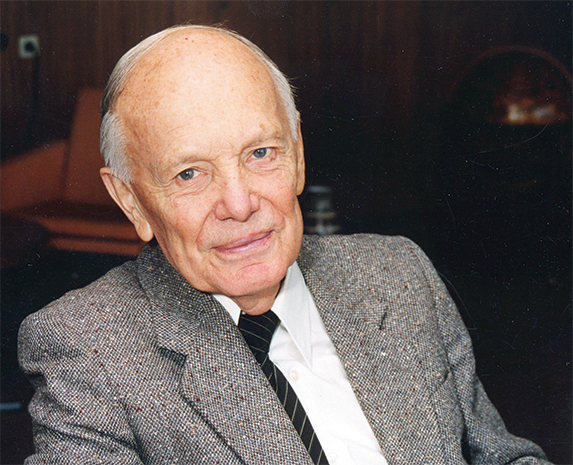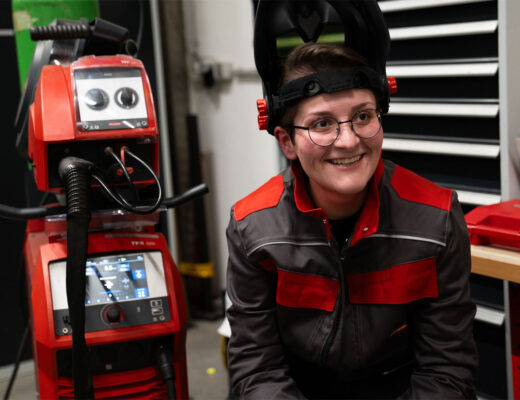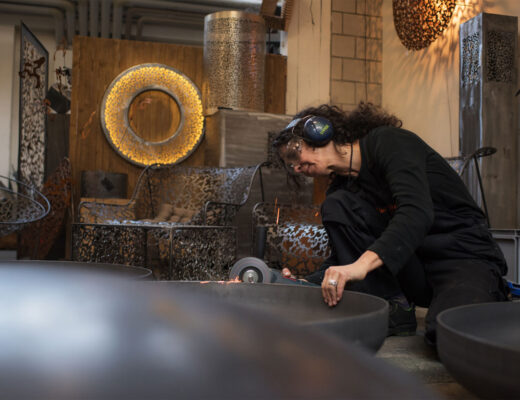He is one of the greats in the history of welding. Thanks to Borys Paton, the Soviet Union was one of the leading nations in the field of arc welding in the second half of the twentieth century. Now the expert is giving us at the Perfect Welding blog his insights into the history of welding and the future challenges facing welding technology.
For Professor Borys Paton, the importance of welding to the development of humanity and our modern quality of life cannot be overstated. After all, the rapid progress that has been made in our society only became possible through the continuous development and refinement of joining technologies. “That’s what inspires me and fascinates me,” says Paton in an interview with the Perfect Welding blog. Paton himself is considered one of the most important pioneers in the development of welding. Known as a hero in Ukraine, he heads one of the most renowned institutes for electric welding: the E.O. Paton Electric Welding Institute in Kiev.
A welding expert of historical importance
Paton was particularly active in the field of mechanized welding and thus played a major role in the further development of welding technology. “The most breathtaking changes have been brought about by manual metal arc welding, submerged arc welding, tungsten inert gas welding, as well as metal inert and metal active gas welding,” explains Paton. The expert sees the growing demands of industry as the great driver behind new developments in the welding sector. The industrial need for new methods and techniques has led to the development of alternating current welding, pulse processors, autocorrection settings, and digitally controlled processes.
TIG welding will continue to be the first choice for high quality
“TIG welding remains the best choice whenever there are high demands on the quality of the weld seam,” says Paton. The expert even predicts that this venerable welding process will play an important role in joint welding in the future, especially in the production sector, and particularly where robots are used. A key field of application is single-pass welding of thicker walls with thicknesses of ten millimeters and more. Among the groundbreaking developments in the history of the TIG process, Paton highlights the use of active substances (activating flux or “A-TIG”), high frequency TIG welding (high frequency pulse or “HFP-TIG”), and the use of an inert gas added to the active gas. These improvements to the welding process significantly increase the cost effectiveness of TIG welding.
The future of welding will be challenging
Despite the numerous developments of recent years, the expert sees a great need for new welding systems, processes, and additives. “There are an increasing number of structures and machines that have reached a critical service life. Repair welding is therefore an important topic. We need to establish reliable processes for determining the residual service life of welded joints,” explains Paton. In addition, industry is currently pushing for the further development of combinations that are used in hybrid processes. The welding expert also sees potential for improvement in the welding equipment itself. The design also needs to be further developed to facilitate maintenance and repair work in the future. But, in Paton’s opinion, the beauty of welding lies in precisely this constant need to search for fundamentally new solutions and the development of new technologies, materials, and structures.
A pioneer in the development of welding
Borys Paton has been instrumental in the development of welding. His personal interest in joining metals started right from his birth in 1918. As the son of the founder of one of the most important welding technology institutes in the world, Paton quickly followed in his father’s footsteps. He studied at the Kiev Polytechnic Institute and initially worked as an engineer. After his father’s death, he took over as head of the E.O. Paton Electric Welding Institute in Kiev in 1953. In the following years, Paton created the framework conditions for further research work, established important contacts with industry representatives, and promoted methods such as mechanized welding.
Read more about TIG welding:
ArcTig: Tig welding with speed and ease
What is … Aluminum welding with alternating current (AC)?
Synchronized TIG welding – two welders working in sync saves time
 Perfect Welding Blog
Perfect Welding Blog






No Comments